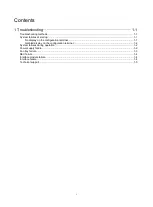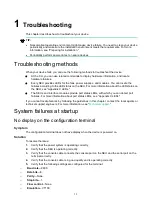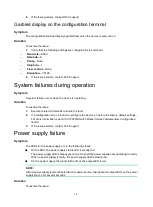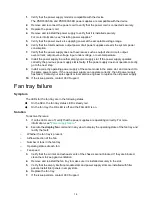
1-11
Installing a QSFP+/QSFP28 transceiver module
CAUTION:
•
Read the following instructions before you install an QSFP+/QSFP28 transceiver module. Failure
to follow these instructions might cause damage to the module.
•
Do not remove the dust plug from the QSFP+/QSFP28 transceiver module if you are not to
connect an optical fiber to the module. For more information about connecting an optical fiber,
see "Connecting the device to the network through an optical fiber."
•
Before you install an QSFP+/QSFP28 transceiver module, remove the optical fiber (if any) from
it.
To install a QSFP+/QSFP28 transceiver module:
1.
Wear an ESD wrist strap and make sure the strap makes good skin contact and is reliably
grounded. For more information, see "
."
2.
Unpack the module.
Do not touch the golden plating of the module.
3.
Pivot the clasp of the module up. Skip this step for a transceiver module that uses a plastic pull
latch.
4.
Holding the module by its two sides, gently push the module into the slot until it has firm contact
with the slot, as shown in
If you cannot hold the module by its two sides because of high module density, press the
module on its head end to push it in.
Figure1-11 Installing a QSFP+/QSFP28 transceiver module
Connecting a QSFP+/QSFP28 copper cable
CAUTION:
When you connect a copper cable, make sure the bend radius of the cable is not less than eight
times the fiber diameter.
The copper cables are hot swappable.
You can use QSFP+ copper cables to connect QSFP+ ports and QSFP28 copper cables to connect
QSFP28 ports over a short distance.
To connect a QSFP+/QSFP28 copper cable:
1.
Wear an ESD wrist strap and make sure the strap makes good skin contact and is reliably
grounded. For more information, see "
2.
Unpack the copper cable.
















































